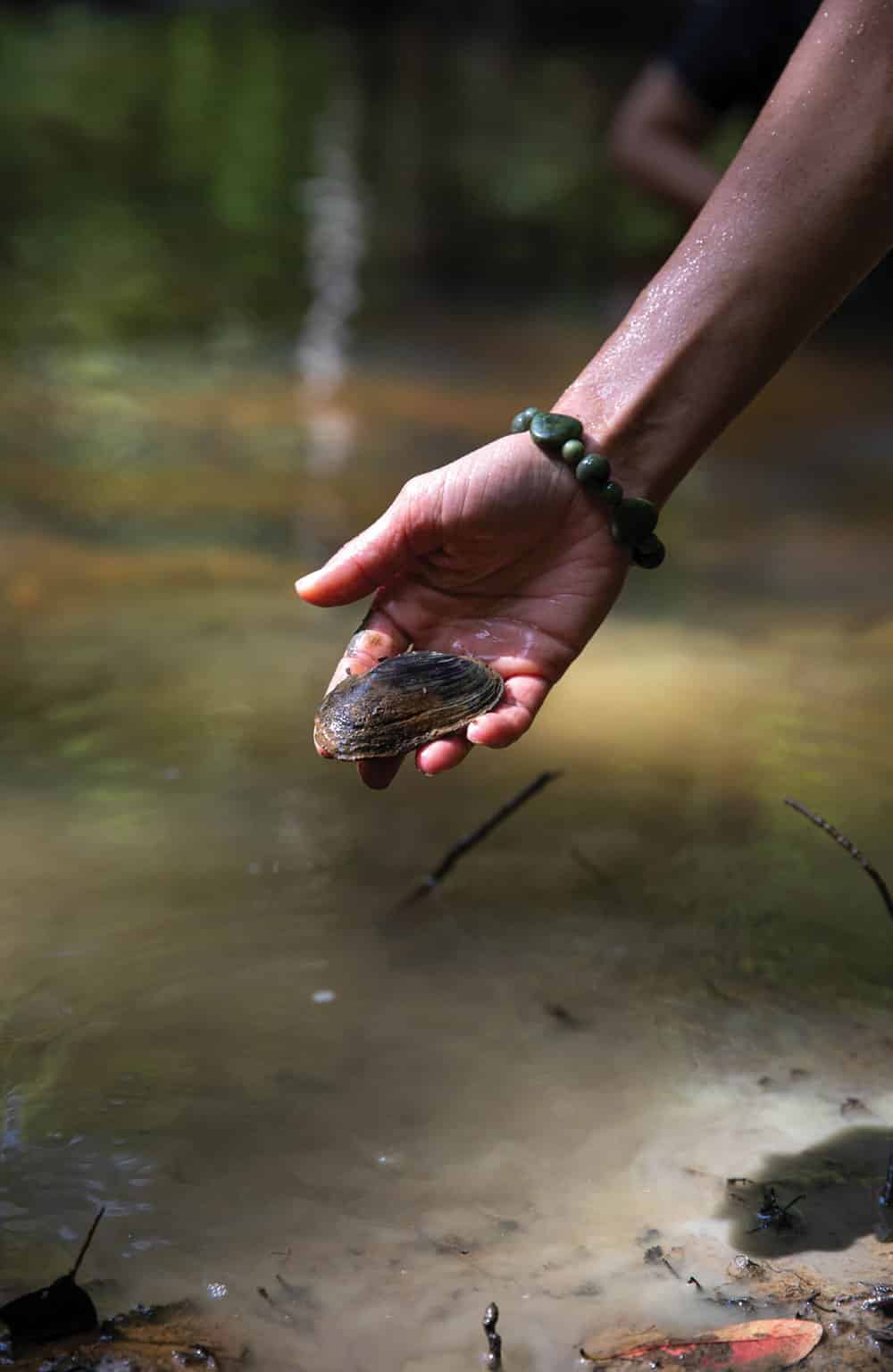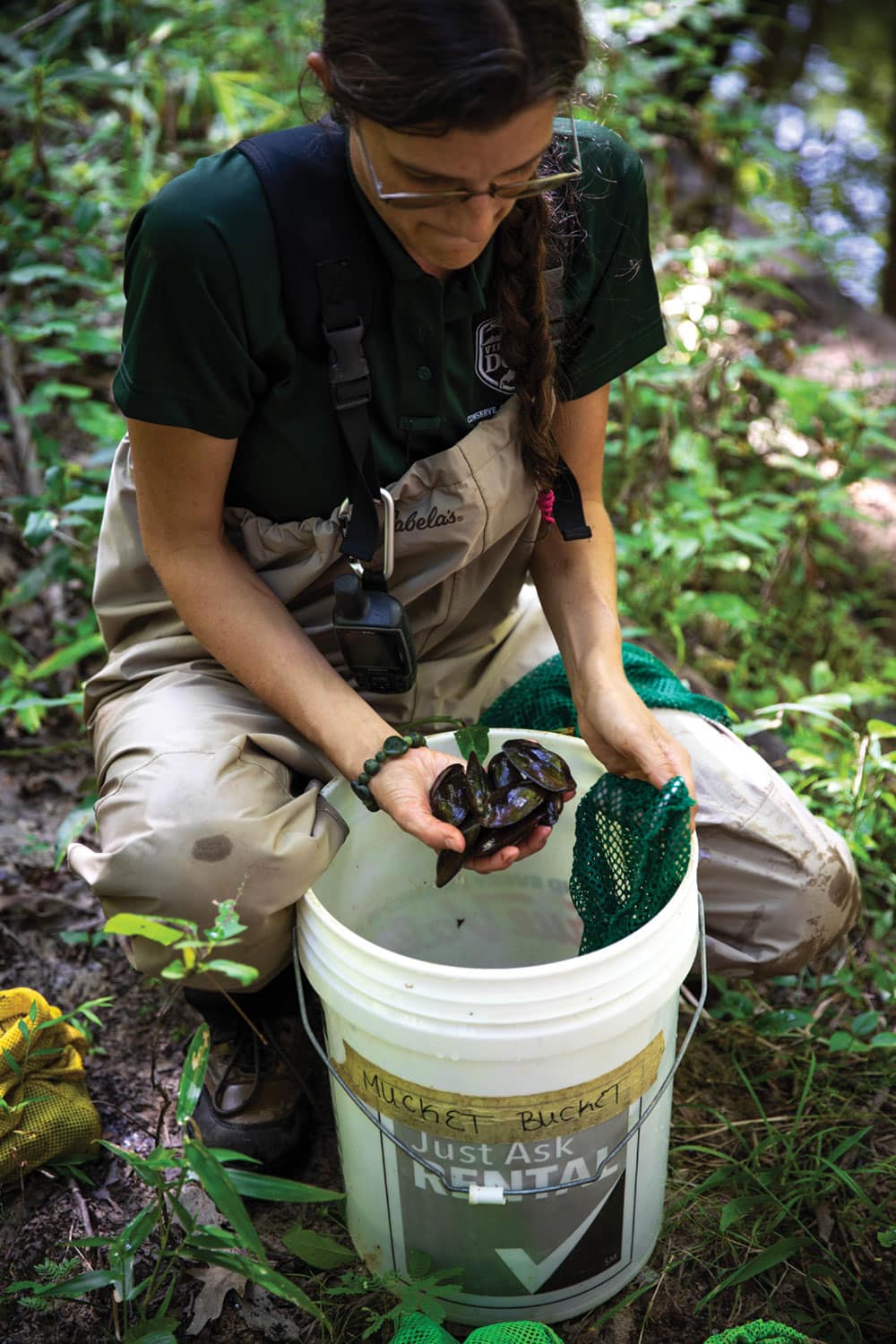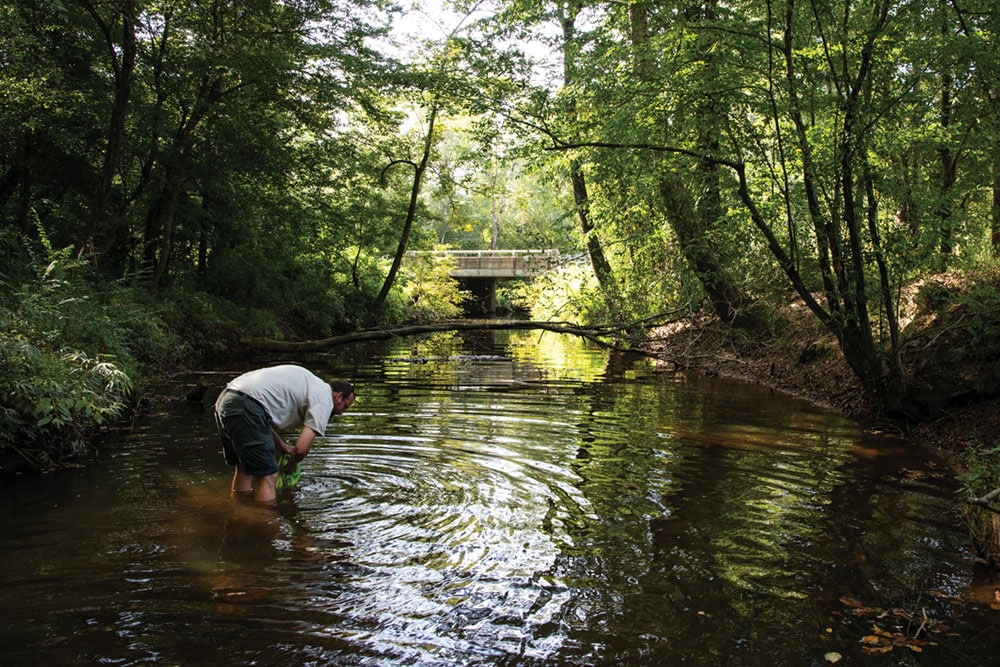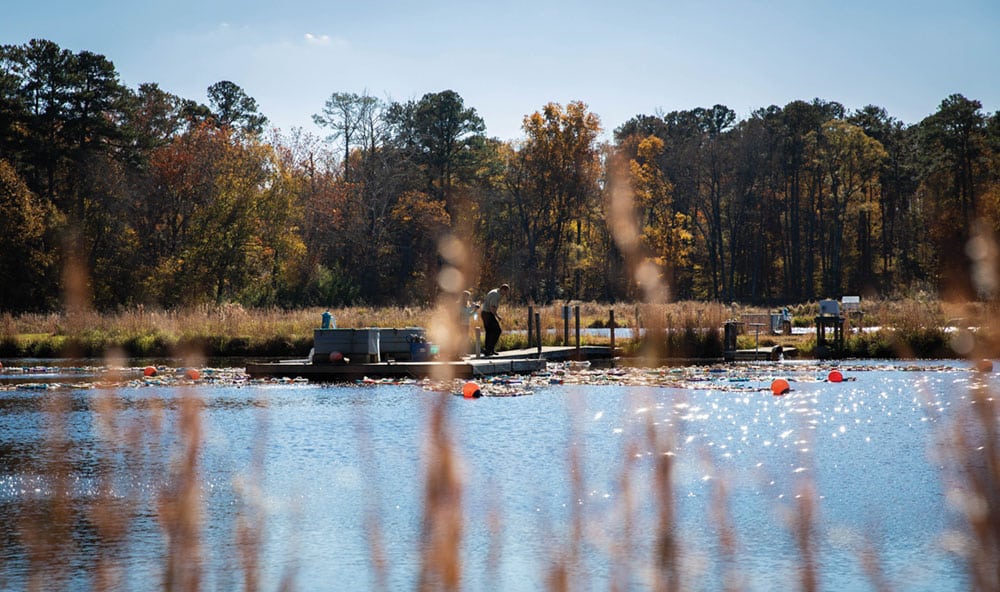Diving beneath the water’s surface, Erin Reilly descended to the riverbed and began placing mussels in the sediment. Breathing through her scuba gear, she watched as thousands of the freshwater critters settled into their new home—the James River. Amid the scattered concrete remains of bridges and natural bedrock, the mussels started to filter the water through their gills.
As a staff scientist with the James River Association (JRA), Reilly works with a team of biologists from the Virginia Department of Wildlife Resources and U.S. Fish and Wildlife Service to bring mussels back to the James, starting in the urban section of the river through downtown Richmond, Va. “Seeing all those mussels down there when you’ve just planted several thousands of them and they haven’t started to bury yet was really cool,” Reilly said, not long after her dive last fall.

An indicator species, mussels are useful for determining the overall health of a waterway. Once a prominent species in Virginia’s storied river, years of waste and pollution made the James an uninhabitable place for them to live. With the help of a grant from the Good Shepherd Foundation, this partnership is trying to create a thriving mussel population again, especially as water quality has improved since they disappeared in the 70s and 80s.
“Mussels can’t move very far,” Reilly said. “So if they’re gone from an area, even if the area has improved water quality, it can take a long time for the mussels to get back.”
Mussels also play an important role in the ecosystem, as each individual can filter up to 15 gallons of water a day, removing algae, bacteria, and nutrients from the water column. “The James is a very industrial river and has been for a long time,” Reilly said. “The more that we can get the river’s natural processes to take care of things, the less money that our wastewater treatment centers and water treatment facilities have to spend, the better the water is.”
But across the continent, freshwater mussels are one of the most endangered groups of taxa, with around 70 percent of species considered threatened or endangered in some manner. In Virginia alone, there are more than 80 species of freshwater mussels, including almost two dozen of which can be found in the James.
Variety Is the Spice of Life
Mussel restoration work is not a new concept in Virginia. For almost three decades, biologists have been working in the Clinch River of southwest Virginia, known as a biodiversity hotspot for its concentration of rare and imperiled freshwater animals, to restore native mussels. Over the years, that work spread to other rivers, including the Powell, Holsten, Nottoway, and now the James.
But establishing a sustainable population of mussels in a waterway is no easy task. Unlike efforts to return oysters to the Chesapeake Bay, of which there is only one species found on the East Coast, there are hundreds of species of freshwater mussels. Each species has different habitat and water quality needs, so scientists and conservation groups can’t apply the same strategy to every mussel released.
At the Harrison Lake National Fish Hatchery just outside of Richmond, researchers work with a variety of mussels to be released across the region. Amy Maynard, a former freshwater mussel propagation biologist at the hatchery, said those differences are apparent in a mussel’s reproductive cycle. When breeding, males will release sperm into the water column which the females will then filter in to fertilize their eggs. Mussels then depend on a host fish to incubate the larvae in their gills. “Some mussels will release their larvae straight into the water column and let the fish get them from there,” Maynard said. “There’s actually a species that will close down their shells on a fish’s head to spread their larvae around. They’re all trying to get their larvae on a fish.” Other species have evolved to include a mantle that mimics another creature the host fish might prey upon.
The larvae stay with the fish as they develop into juveniles, a process that can take between a week and a month. “They’ll fall off wherever the fish might have moved and settle out into the sediment,” Maynard said. While this relationship is mutually beneficial with the fish receiving clean water in exchange for the ride, it also means that a decline in one species can affect the other. Waterway impediments like dams impact a mussel’s ability to reproduce because the host fish can no longer get upstream. “If their host fish is threatened, you might have a harder time finding access because you can’t move,” Maynard said.
But even the host fish varies among mussels, including the alewife floater and yellow lampmussel, two species that thrive in the James. The alewife floater uses alewife herring, blueback herring, and American shad, while the yellow lampmussel needs bass, sunfish, yellow perch, or white perch. In order for mussel restoration to be successful in the James, these fish species must also be present.

Release the Mussels
Restoration efforts in downtown Richmond began with two releases in the main stem of the river in 2020. But the river’s width and strong current made it difficult to monitor growth. Instead, the team decided to focus on smaller tributaries of the James where they’d be able to keep track of the population and collect data.
The team chose three sites where there was good habitat and the appropriate host fish. Bryce Maynard, a former biological science technician at the hatchery, said knowing what makes good habitat is both an art and a science. “Some of the time you just look at a place and it looks mussely,” he said.
“Mussels have to be able to bury a little bit. If it’s really consolidated, then they can’t hunker down when high flows come through. Same thing if it’s really soft, they’re just going to get washed away.”

Once released in the tributaries, researchers use laser-engraved numbers to identify each individual mussel when they come back to do population counts. Because the mussels burrow down and can be hard to find, some released mussels also have a PIT tag glued to the outer shell so a team member can run an antenna over the bottom of the river and know exactly where the mussel is located. “By using that technology, we increase our recapture rate, therefore we get more information from the site,” Maynard said.
The data collected will be used to determine future release sites as JRA and other partners look to continue restoration efforts throughout the river. According to Reilly, restoring these filter feeders to the waterways is a vital step in maintaining the biodiversity of the state. “Ultimately, we want the James to have healthy wildlife and human communities.”
Cover photo: Biologists give mussels a head start at the Harrison Lake National Fish Hatchery. Photo by Shannon McGowan







